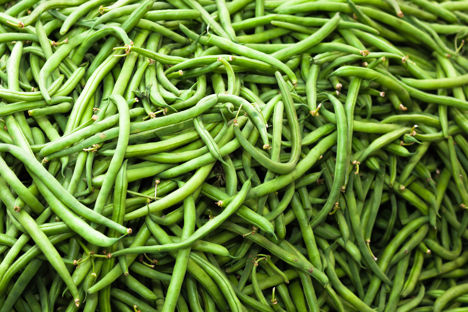
Grow your own: autumn
Nick Harman offers tips on how to make your gluts of home-grown produce last longer, what’s left to harvest as the weather turns cold and why now is the perfect time to prepare your patch for spring.
View more from this series:
Grow your ownIt’s that time of the year again – the time that neighbours stop answering the door to me. I know they’re in; I can hear the ticking of their car cooling down and see movement past the frosted glass. But no one is coming to the door and I know why. It’s the glut.
Around now most vegetable gardeners have more produce than they can ever eat. Runner beans are ridiculously productive, so very, very many that I’m picking kilos every day. And as for tomatoes, well I can see why they have that tomato fight in Spain every year; anything to get rid of them. And for weeks the courgette plants have been non-stop.
At first my neighbours accepted my gifts of surplus with cries of joy, but as the weeks passed they looked noticeably less happy to be given yet another bulging bag of courgettes and beans.
Why not freeze stuff? Well courgettes don’t freeze at all well – being mostly water they break down to mush. Make chutneys? Yes, all very well in theory and I do make some, but it’s no fun stirring red hot pans for hours and finding enough glass jars is always an issue.
But you can freeze your runner beans. They want slicing, blanching very briefly in boiling water and then put into bags. I make each bag hold enough for two portions. The only problem can be finding enough space in the freezer.
To keep runner beans going with lots of nice tender beans and not the stringy monsters you get in the shops, you need to pick every day. Get the useless ones off, which means any you can feel the bulge of beans in, and put them on the compost heap.
At this time of year, the runner beans will also be so densely leaved they present an obstacle to wind, and their heavy weight means they can be pushed over. Regularly check the poles are all in the ground firmly and that things aren’t collapsing.
Tomatoes freeze well. The best kinds to grow for sauce are Italian plum tomatoes, as they have thick fleshy walls and far less water and seeds. Put them, or any tomatoes, in a bowl and cover with boiling water for a minute. Drain and then the skins will slip off easily. Make passata and freeze in bags.
If you haven’t yet ‘stopped’ your tomatoes, do it now – cut off the tops so that energy goes to ripening. If your spuds have blight (brown decaying leaves), cut all the foliage off to stop it getting down to the potatoes underground. You can try digging some up to see how bad things might be; I found some signs of blight and a few slug holes. All still edible.
If your courgettes have white looking leaves, it’s powdery mildew. Cool night temperatures following warm dry days and dry soil cause it. There’s not much to be done and the cooling weather will be ending their run soon anyway. Best compost them now and dig over where they were ready for something new.
More to come
If your sweetcorn has survived being stolen by squirrels (you did put up nets didn’t you?) then it should be ready for you to eat soon. The silks should be a golden brown but peel back a bit of the covering and look at the cobs. They should be a good yellow colour and if you pinch one it should leak milky juice (if it’s clear then fold back the cover and give it a few more days). Once picked, sweetcorn begins turning its sugars to starch so eat it ideally within an hour to get the best flavour.
Pumpkins, butternut squash and similar are not ripe for eating or storage until all the foliage has died back. Now is the time of year when you find them emerging from under the green canopy that’s been hiding them. Stand them on bricks or stones so that they’re clear of wet ground, which might rot them. Depending on where you are in the country it will be the end of the month before the plants die off completely and you can harvest and store the fruits somewhere cool and dry.
You can still plant some seeds; I plant pak choi and other Asian cabbages now as they prefer the cooler air. If you plant every two weeks from now and use fleece to protect them from birds and the cold night air, you should get produce until early October. Start them in pots so you can reliably keep them moist.
Now is the time to start tidying up while it’s still warm and dry enough to make it pleasant and not a chore. Dig over the used ground and generally go around getting things shipshape. I find once the bad weather starts setting in I can all too easily find excuses to not go to the veg patch and then it all gets out of control. I expect I’m not alone.

